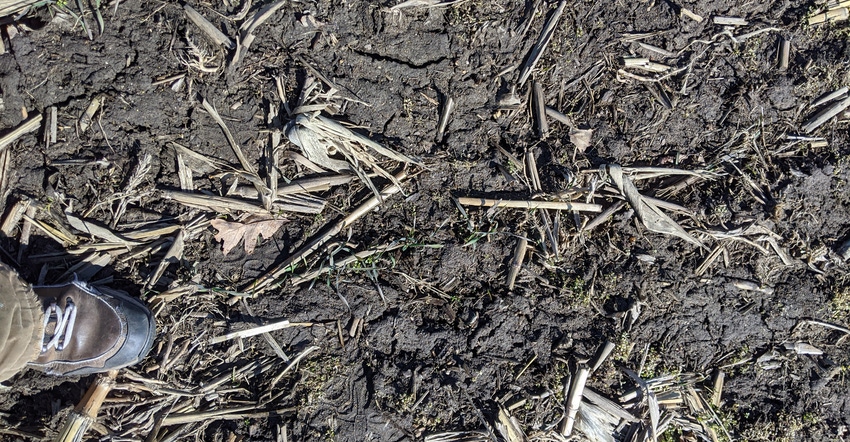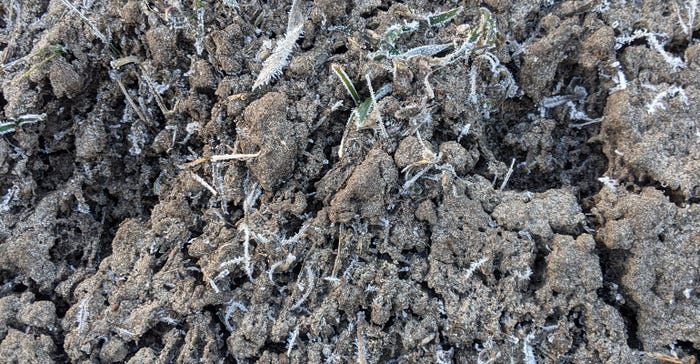December 9, 2021

If you planted wheat or other small grains in the fall, here is an old, yet new-to-some, option to consider: frost-seeding clovers. Adding green manure clovers to small grains is a great way to grow your own nitrogen, improve soil tilth and boost crop yields the following year.
Here are some considerations for frost-seeded clovers:
Choose your clover. The most common clovers frost-seeded into wheat or cereal rye are red clover and yellow blossom sweet clover. Mammoth red clover and medium red clovers are easier to manage than sweet clover and provide benefits, whether you mow for hay or not. Sweet clover produces lots of nitrogen but makes poor hay and can invade pastures.
Mammoth red clover is best for green manure-only situations. Its thick stem and slow regrowth after cutting make it less than ideal for multiple cuttings of hay. Both red clovers are highly shade tolerant and grow well under the small grain canopy. Crimson clover, a popular fall cover crop, is not well adapted for frost seeding.
Seeding rates of around 10 to 15 pounds per acre are typically sufficient for clovers. Use the correct inoculant.
Time seeding correctly. Depending on where you farm, frost-seed in February through mid-March. Consider frost seeding when you’re making a nitrogen application. Frosted soil has a rough surface full of cracks that allow seeds into the soil. As the soil warms up throughout the day or coming weeks, it swells and closes those cracks, pulling seed into the soil and allowing for good seed-to-soil contact.
Seeding on thawed soil can work if there is sufficient freeze-thaw action in the following weeks to incorporate the seed. It’s best to get up early and seed on frost-crusted soils. Sandy, low organic-matter soils are challenging to successfully frost-seed clover. Instead, drill a diverse cover crop mix after harvest.

Reap benefits. Clover can be up to 4 inches tall in 15-inch wheat. About a month after small-grain harvest, consider mowing clover for hay, or making a pass with a rotary mower to stimulate regrowth and control annual weeds. If you just mow to reduce weeds, mow high enough to avoid cutting and stunting clovers. Keep clover in a vegetative state throughout late summer to get maximum nitrogen fixation.
Some farmers say they make more money selling hay than double-cropping soybeans. Plus, there are verified reports in soil health systems of corn yields of 20 to 30 bushels per acre more the year after a clover crop and 6 bushels per acre more soybeans two years later.
Terminate clovers. Maintaining the clover cover over winter does a better job of protecting soil from erosion all winter and spring. Soil health benefits and nitrogen production can be maximized by “planting green” into living clover. Chemically terminate the clover after planting. Nitrogen in the clover residue is slowly released throughout the growing season as residue decays. You will need a solid nutrient management plan for corn. Scout these fields and have a plan for addressing pest issues.
Nielsen is a district conservationist with the Natural Resources Conservation Service, and McLain is the NRCS state soil health specialist. They write on behalf of the Indiana Conservation Partnership.
You May Also Like




